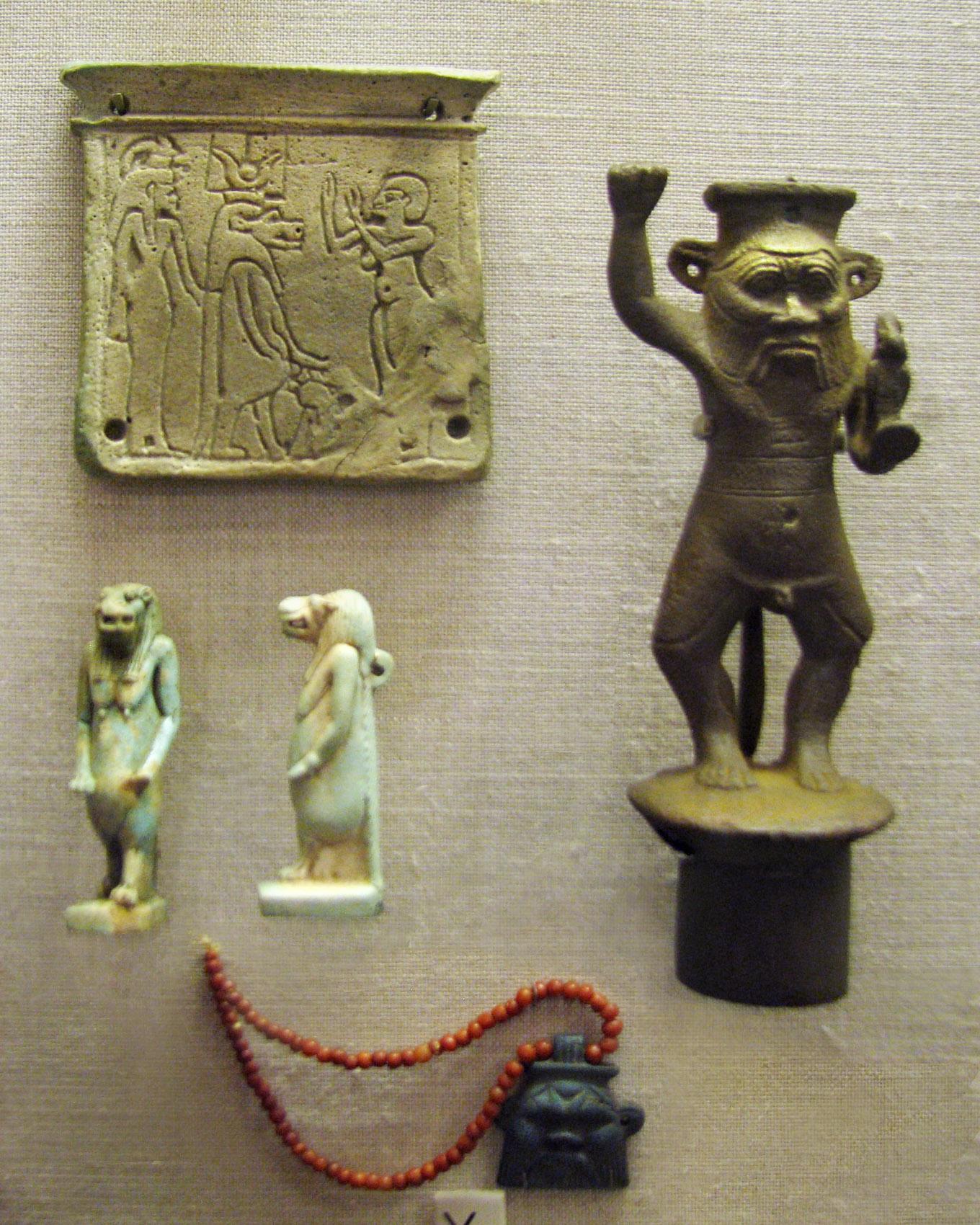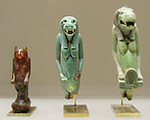
Glazed faience, lower right hand corner restored, H: 8/7; W: 8.1 cm
By Exchange with the Metropolitan Museum of Art, 1950, OIM 18286
Two small faience Taweret: OIM 17485;17524
Bronze statuette of Bes standing: OIM 11177
On Circular Platform, Wears Crown (Feathers Missing), Right Hand Held In Air, Fist Closed, Left Hand Forward, Holds Hawk, Tail Reaches To The Platform
Amulet of Bes (Akhmin?): OIM 186
Glazed, Plain Back, Suspension Loop On Head, Strung with about 60-70 Globular Red Beads
Roman - Steatite - 31h mm
Descriptive list which helped me sort these two Bes
Photo ©Joan Ann Lansberry, 2010



